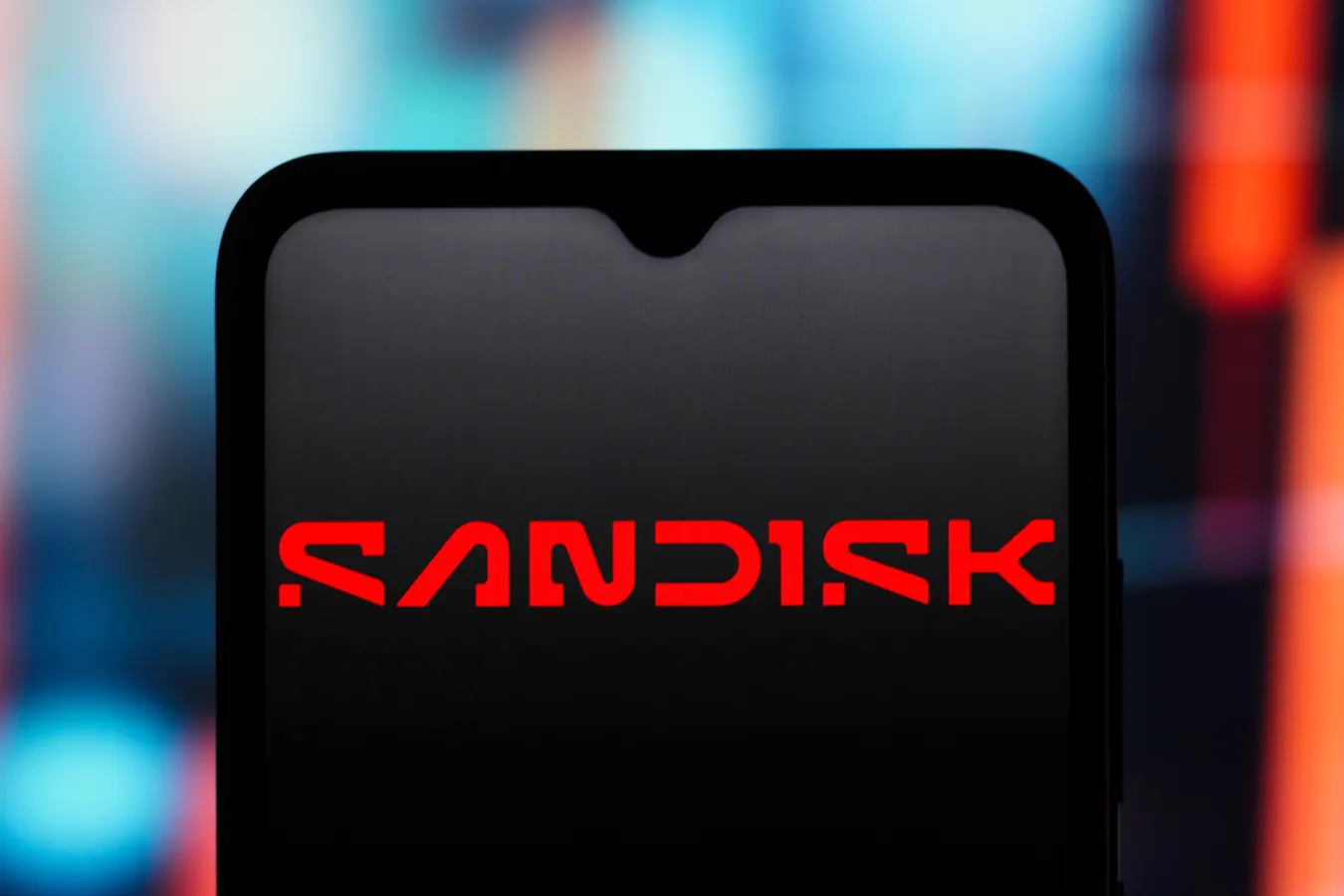By Contributor,Thomas Fuller,Trefis Team
Copyright forbes

CANADA – 2025/09/04: In this photo illustration, the Sandisk Corporation (San Disk) logo is seen displayed on a smartphone screen. (Photo Illustration by Thomas Fuller/SOPA Images/LightRocket via Getty Images)
SOPA Images/LightRocket via Getty Images
Up 215% year-to-date? That’s no mistake. SanDisk (NASDAQ: SNDK) has astonished markets in 2025, with its shares soaring over 215% to around $115. This increase is attributed to a combination of structural demand benefits, a corporate revival, and strengthened fundamentals that have transformed the previously struggling flash memory sector into one of the year’s most sought-after investments. If you are looking for potential gains with reduced volatility compared to holding an individual stock, consider the High Quality Portfolio. It has consistently outperformed its benchmark—a mix of the S&P 500, Russell, and S&P MidCap indexes—and has realized returns surpassing 91% since it was established. Additionally, see –Oklo Stock To Increase 50% More?
Why the surge?
SanDisk’s resurgence began when Western Digital decided to spin off its flash division earlier in 2025, providing the business with a fresh start in the market. Investors quickly reevaluated its worth, particularly as spending on AI and cloud infrastructure triggered an unanticipated surge in demand for NAND flash storage. Sales from data centers now contribute approximately 12% of SanDisk’s revenue, a substantial increase from 6% a year earlier, indicating how the company is repositioning itself at the core of one of technology’s rapidly growing trends.
Financial results are beginning to reflect this momentum as well. In the latest quarter, SanDisk reported revenue of $1.9 billion, an increase of 12% sequentially, while gross margins rose to 26.2% from 22.5% previously. Operating income moved into positive figures thanks to stricter cost management, and total revenue for the fiscal year 2025 reached $7.36 billion. New offerings like BiCS8 NAND and high-bandwidth flash modules are being promoted as crucial for AI workloads, allowing SanDisk to stand out in a highly competitive landscape dominated by Micron, Samsung, and Kioxia.
The stock’s upward trend has been further supported by tight supply conditions and indications of increasing NAND prices, enabling producers such as SanDisk to improve margins even without explosive volume growth. Analysts have responded by increasing price targets, and technical indicators now position SanDisk firmly among the market leaders. Momentum has generated its own tailwind, with institutional investment flowing into the stock at an accelerated rate.
However, risks persist. SanDisk is not consistently profitable, and the company has indicated $60 million in fabrication startup costs in early 2026, which may impact near-term earnings. The memory industry’s history of volatile boom-and-bust cycles is another concern: if demand declines or oversupply reemerges, the recent pricing strength could unravel swiftly. Valuation also appears stretched, as shares are trading at nearly 2x sales, providing little room for error.
MORE FOR YOU
What’s Next?
Currently, SanDisk stands as one of the clearest advantages stemming from the demand for AI-driven infrastructure, and investors are wagering that the rally still has plenty of room to continue. If performance remains robust and margins keep expanding, the stock could realistically ascend toward $150 or beyond. But considering the inherent volatility of the memory sector, SanDisk’s remarkable resurgence is as much about execution as it is about survival within one of technology’s most cyclical industries.
Investors should be ready for significant fluctuations and the possibility of considerable losses if market conditions worsen or if the company fails to implement its ambitious growth strategies. While the potential for upside is mathematically sound based on anticipated revenues, it demands flawless execution in a swiftly changing and competitive arena. Now, we apply a risk assessment framework while constructing the Trefis High Quality (HQ) Portfolio, which, with a collection of 30 stocks, has a track record of comfortably outperforming the S&P 500 over the last 4-year period. Why is that? As a group, HQ Portfolio stocks provided better returns with less risk versus the benchmark index; less of a roller-coaster ride as evident in HQ Portfolio performance metrics.
Editorial StandardsReprints & Permissions



